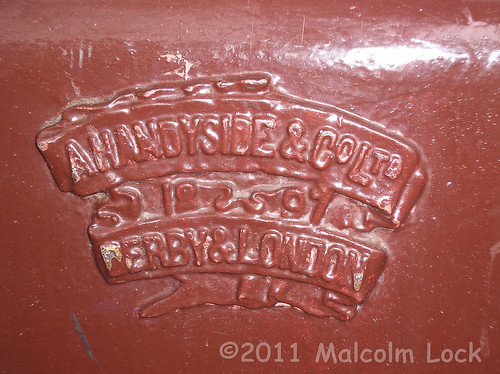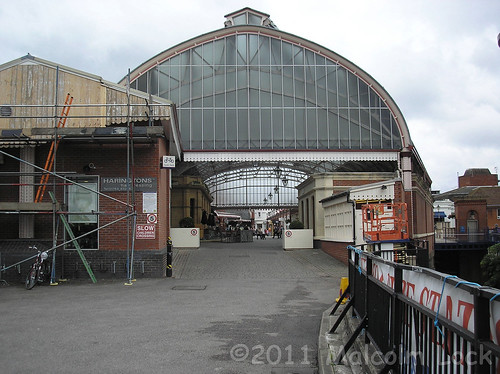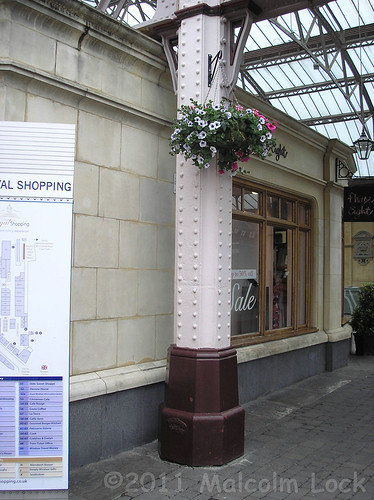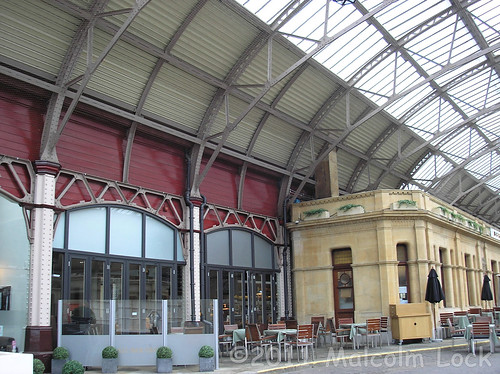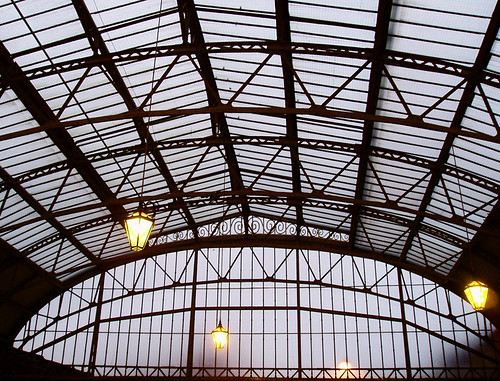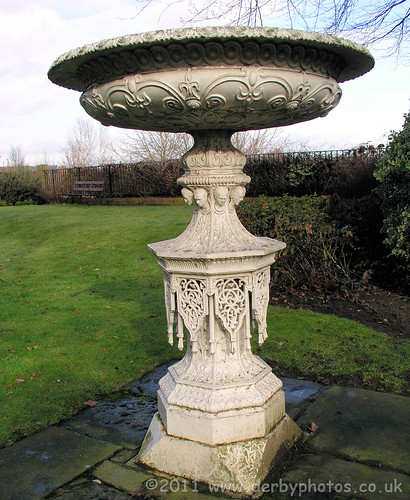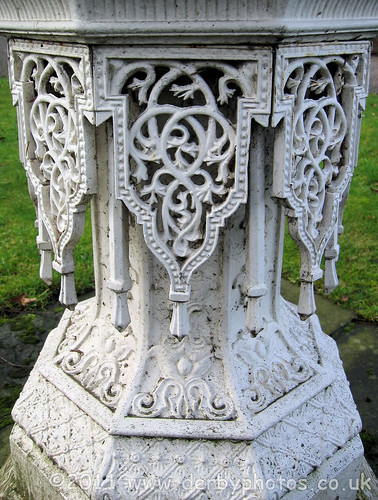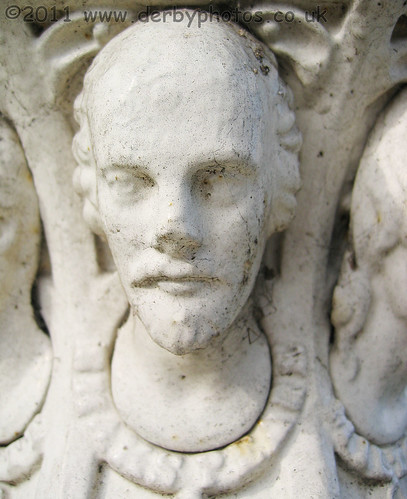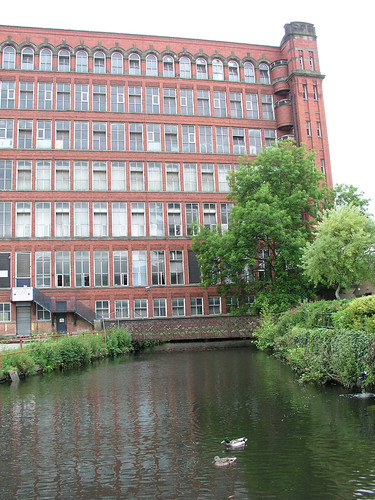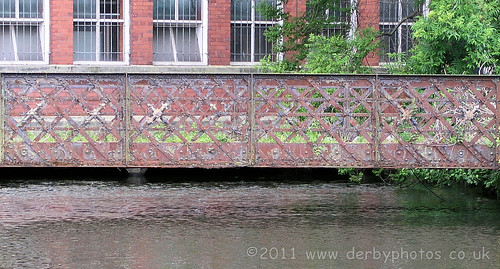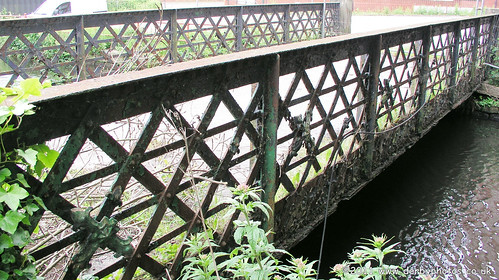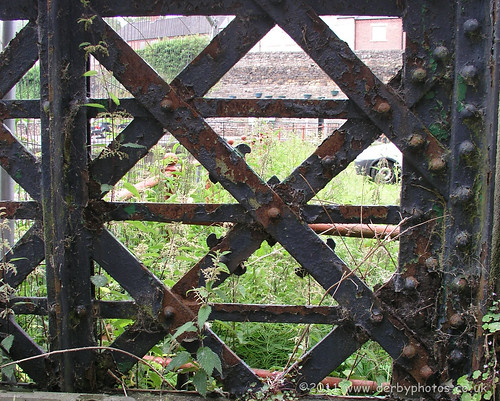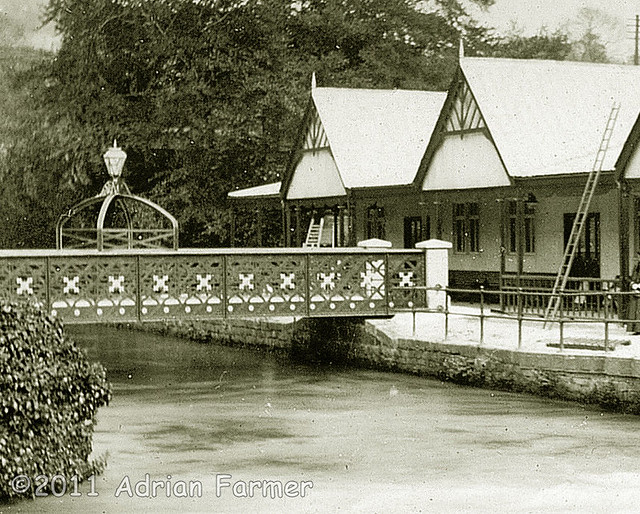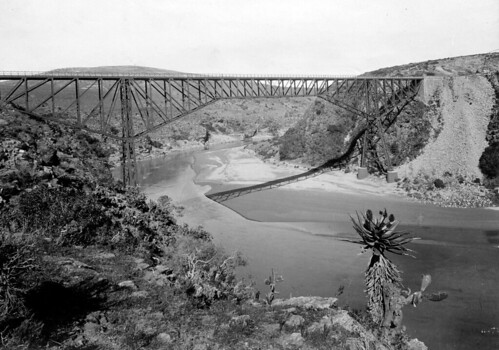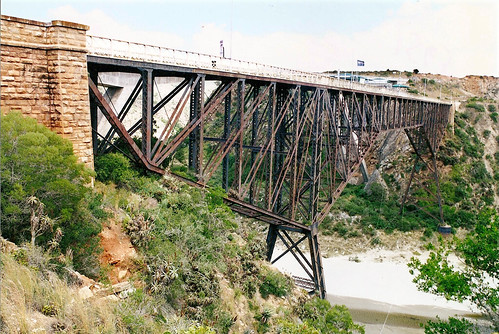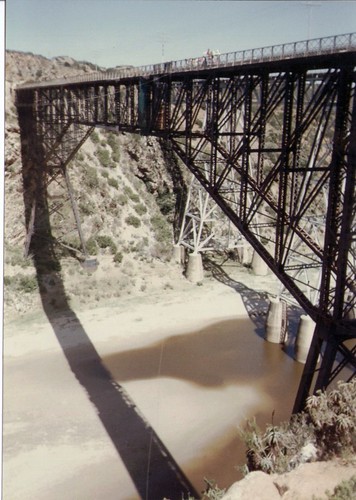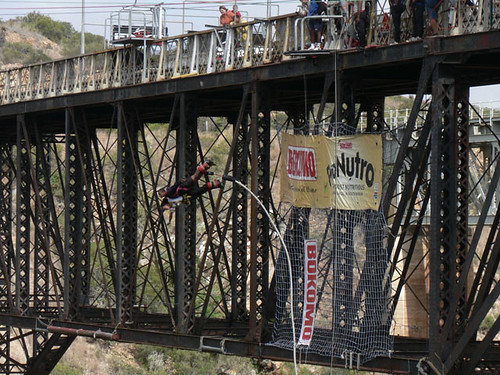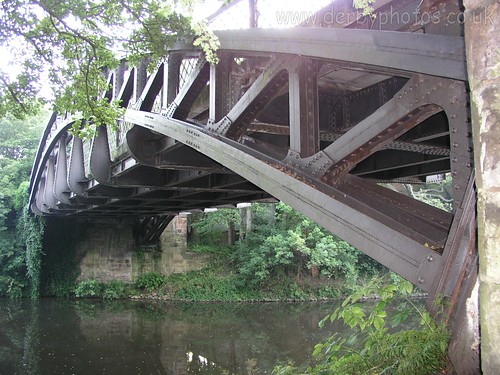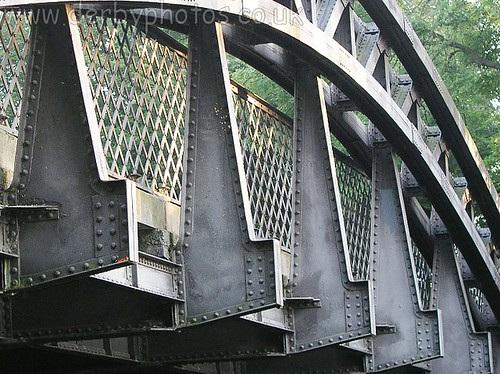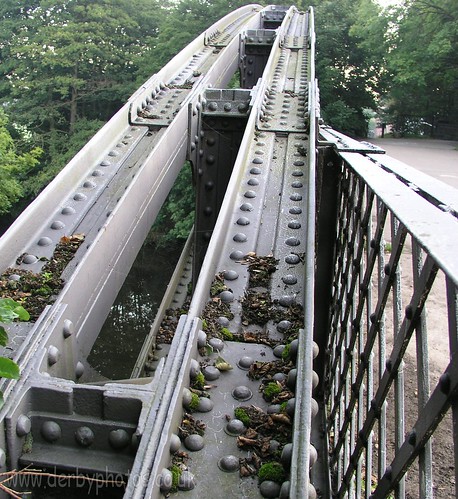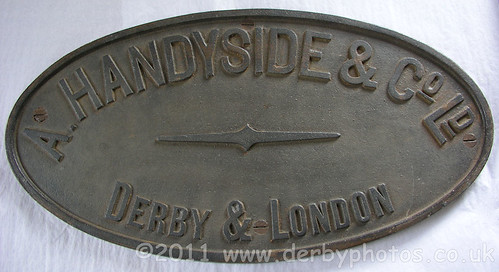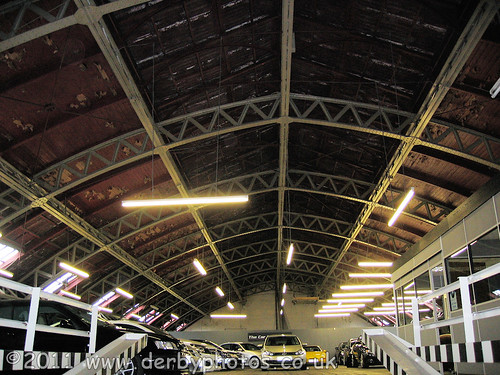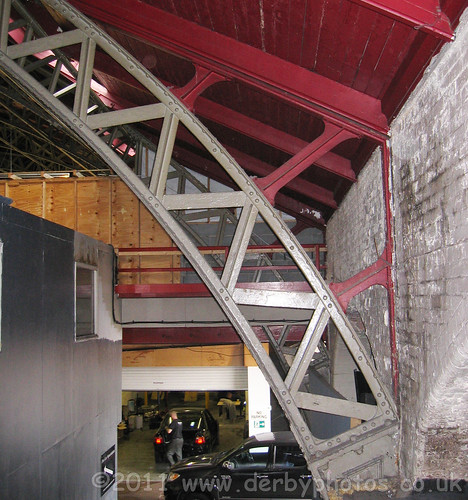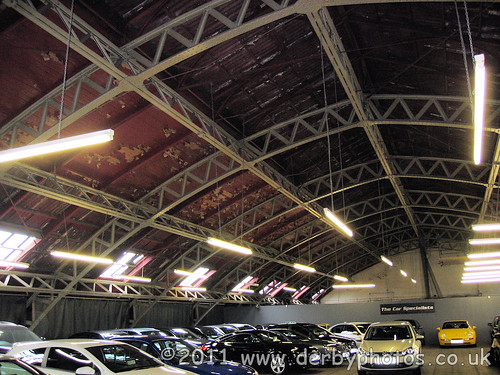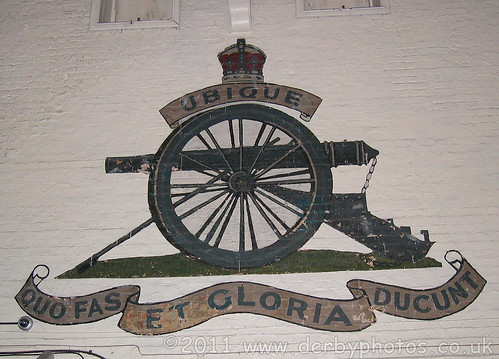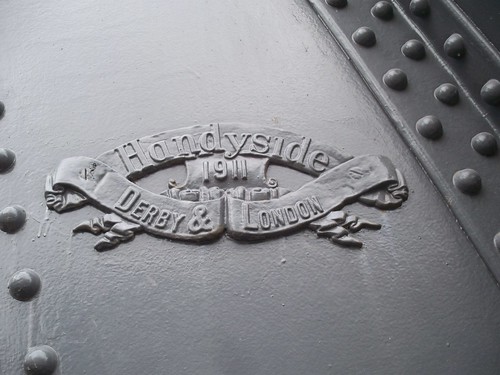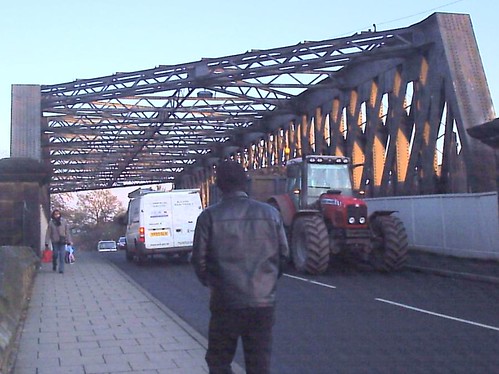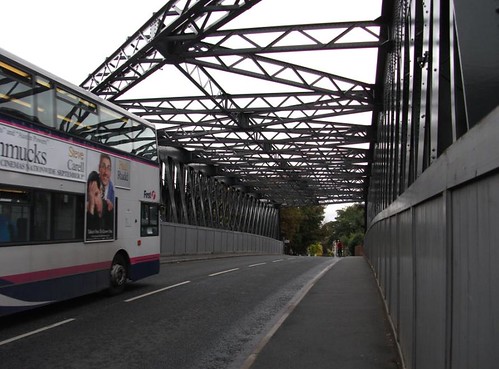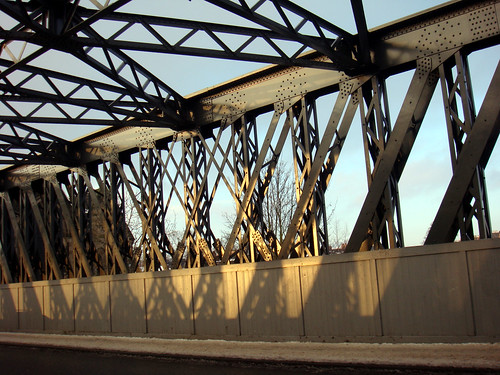The Britannia Foundry's work was well known throughout the Victorian Era for its fine quality, so these fountains can be found all over the globe but where exactly they are located is difficult to find out. But thankfully because of my extensive research here, people are beginning to contact me with details of Handyside work. I am then able to add it to my Handyside world map and this blog, where I can go into great details about every item I find including historical information, Photographs from Flickr, Videos from Youtube, Exact map locations, Google Streetviews etc.
Here is a recent discovery I've made, since getting a copy of Handyside's 1879 fountain and vase catalogue I've been able to identify this fountain as one made by A. Handyside.
This drinking fountain is known as The Curling Drinking Fountain and since the year 2000 has been located at Seahouses Square, Marine Parade, Eastbourne in East Sussex, UK.
It was erected in 1865, unveilied on the 14th September 1865 and was commissioned by Mrs Elizabeth Curling of Kent Lodge, Seaside Road, Eastbourne.
The fountain was originally located in the middle of the road in Seaside, near the junction, near the junction of Leaf Hall Road.
It was first moved to the corner with Langney Road in the 1950’s before being restored and relocated on Marine Parade on the 21st December 2000. It was Grade II listed as of 30th March 1992.
This particular design of drinking fountain is listed as Design Number 24 on Page 42 of the 1879 publication "An Illustrated book of Designs for Fountains and Vases, costing from £1 to £1200 manufactured by Andrew Handyside".
The price for this fountain is listed in April 1880 as between £18 0s 0d and £20 5s 0d depending what finish was applied (no finish, bronze/marble paint etc).
According to the drawing its 6 foot 7 inches from the base to the bottom of the lamp support and includes a animal drinking trough in the base. Looking at the photographs of this fountain in Eastbourne it would appear that the animal drinking troughs have been covered up at some point.
This fountain really is in excellent condition after a recent restoration in 2000, Compare this with the very same design of fountain I found further down the coast in Alum chine which as you can see is quite badly damaged but that one does still have the A.Handyside makers plaque in place.
Photographs of the Curling Drinking Fountain:
Very nice overall view of the fountain sitting on three octagonal Portland stone steps,
as viewed from the Marine Parade side looking inland.
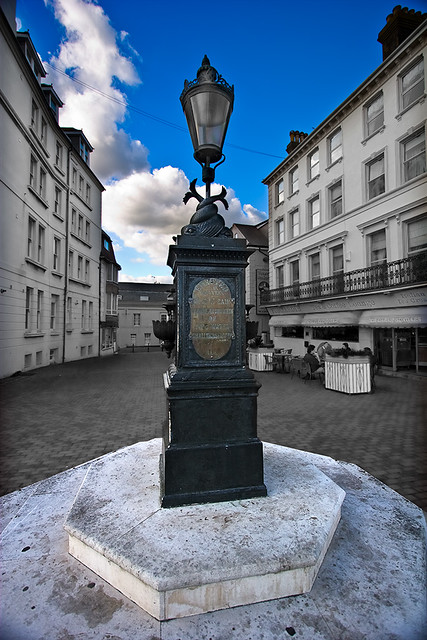
Photograph by popupstands.
Nice shot of the two intertwined dolphins by Deb Collins.

Photograph by by Deb Collins showing the water spout, bowl and the two cup holders either side. This same arrangement is on the opposite side of the fountain, see bottom photo.

Photograph showing an angled view with the two intertwined dolphins on
top supporting the light.
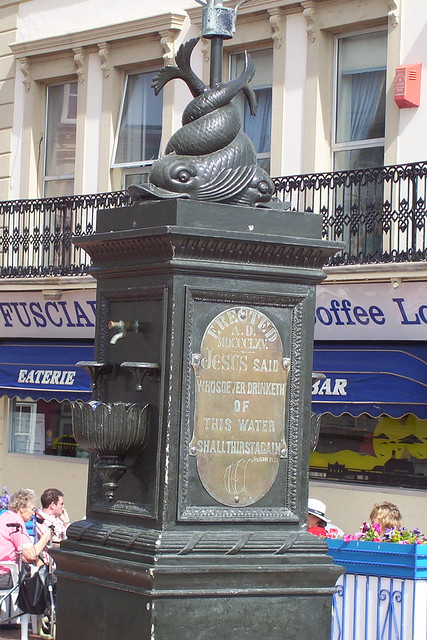
Photograph by Dorothy Anne.
The fountain as viewed looking in the direction of the English Channel.
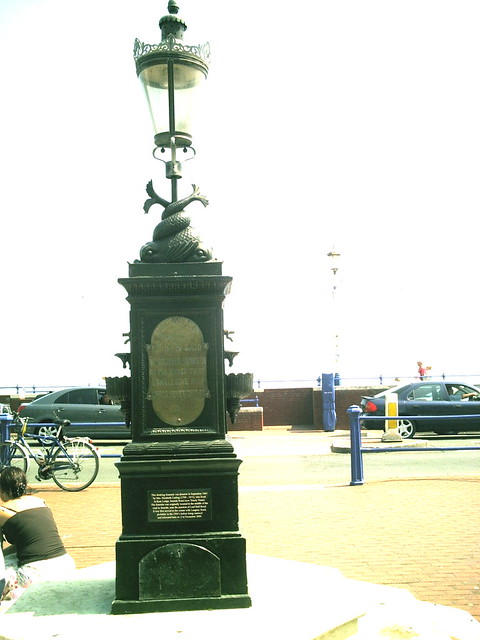
Photograph by Lesterp25.
Photograph showing one of the bronze plaques and both drinking sides in shot.
The plaque reads Erected A.D. MDCCCLXV (i.e 1865)
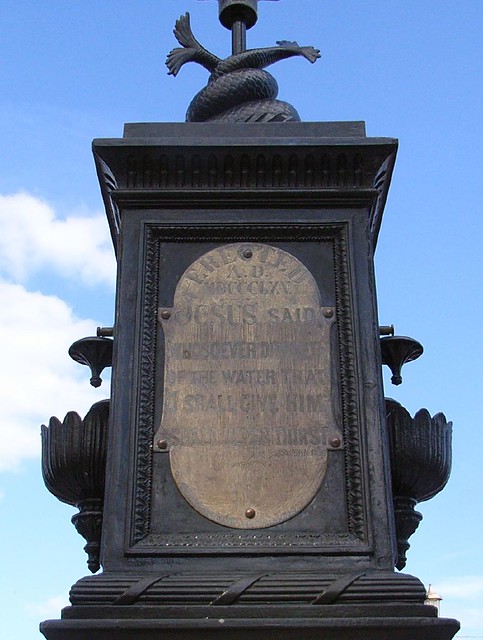
Photograph by Old_boy.
Map Location:
View my Andrew Handyside World Map to see the exact location of this fountain on my world map.
My world map is the result of hundreds of hours of research into the company, plotting out each item as I find it.
Can you help find more Andrew Handyside stuff ?
If anyone out there knows of any other Fountains around the world bearing the Handyside badge that I have not mentioned yet then please get in touch with details, location, photographs etc.
Thanks
Andy


